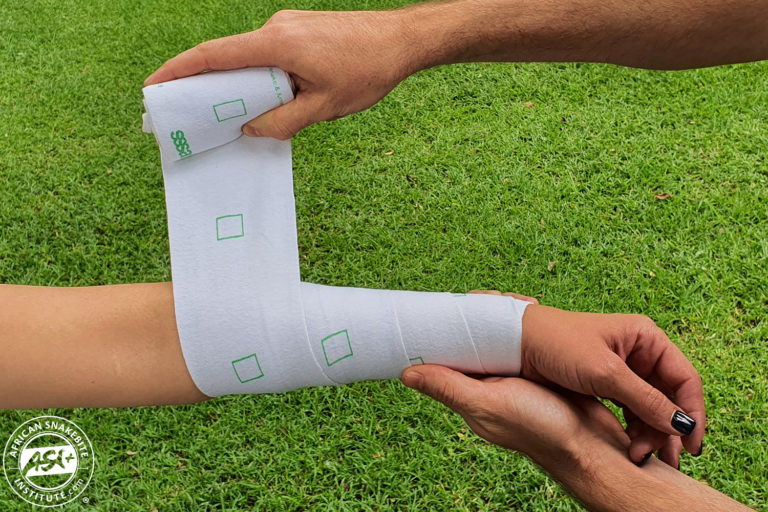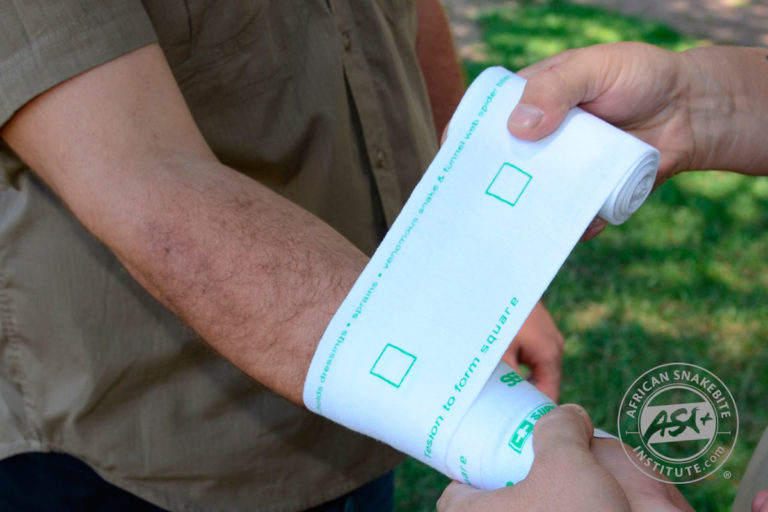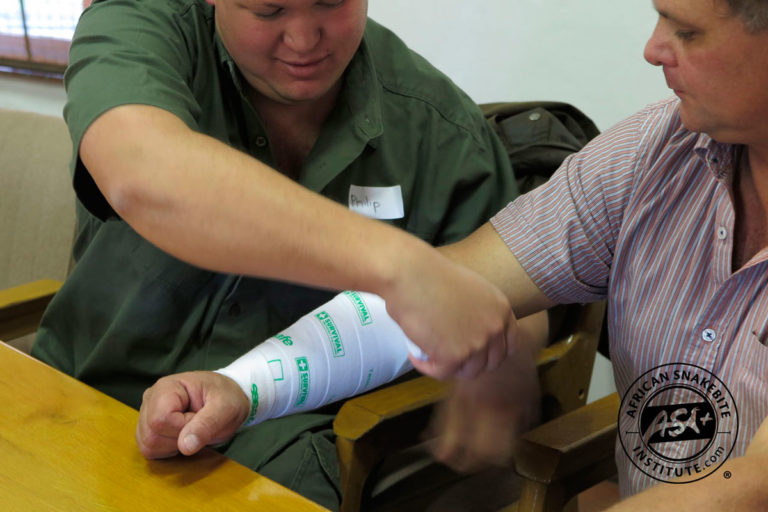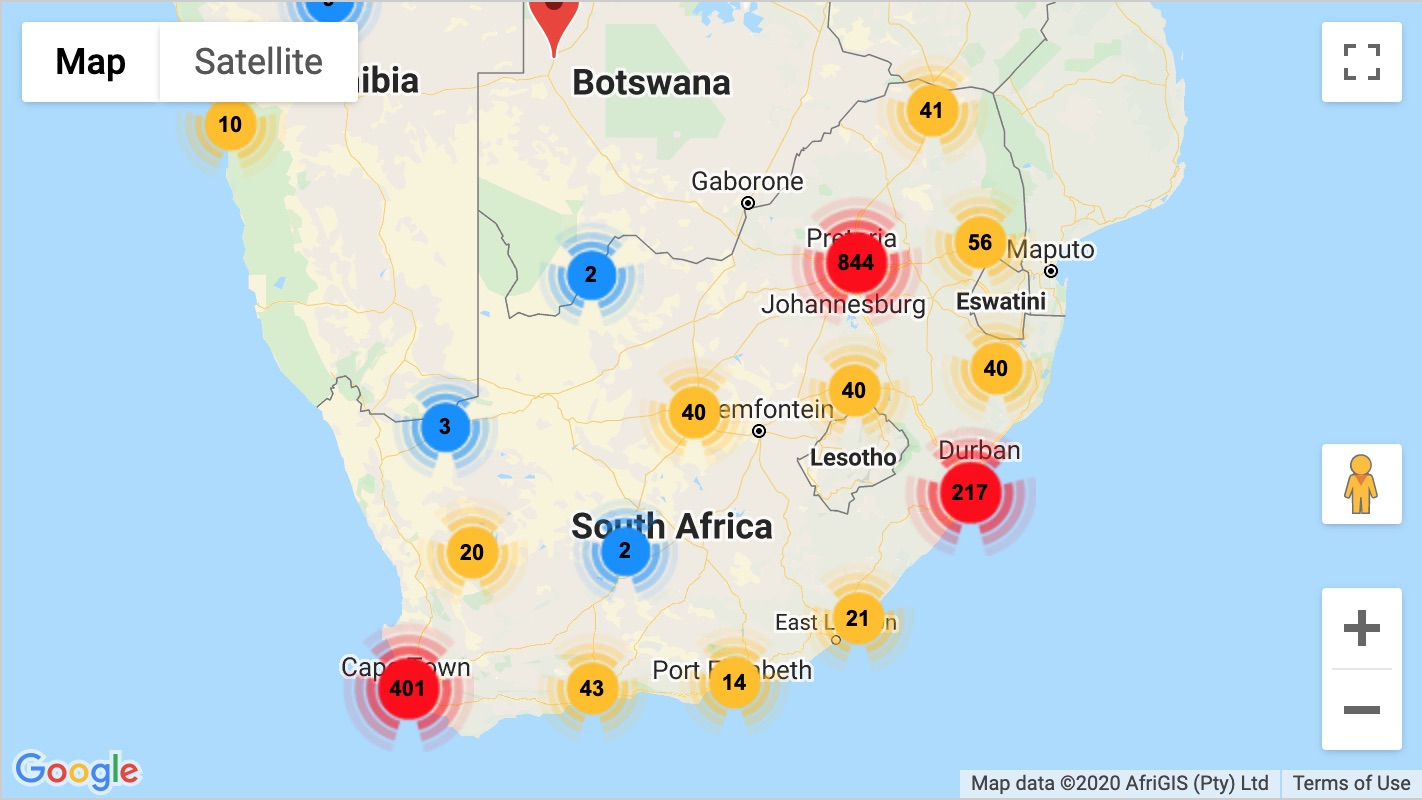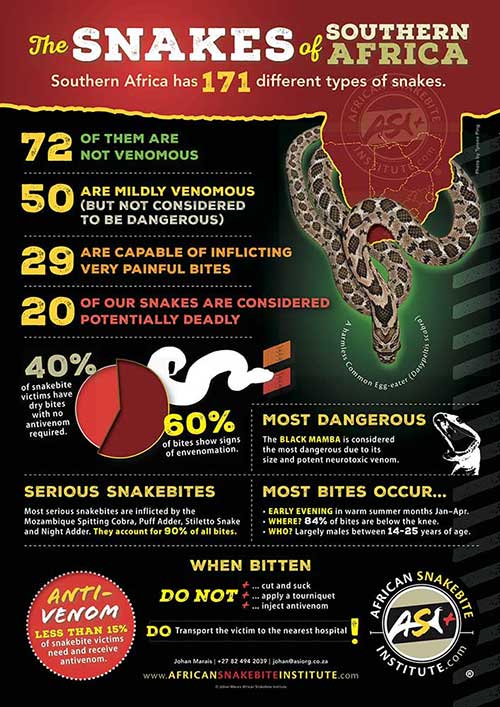PLEASE NOTE. Our offices will be closed from the 12th of December 2025 – until the 5th of January 2026. Last date for orders will be the 8th of December 2025. Any orders placed after the 8th of December 2025, will only be dispatched after the 5th of January 2026.
Most fatal snakebites in southern Africa are from neurotoxic bites, and the Black Mamba and Cape Cobra account for most of these bites. In a confirmed Cape Cobra or Black Mamba bite, the victim needs to be transported to a hospital urgently and a pressure bandage should be applied.
Pressure immobilisation may be beneficial and inhibit the spread of venom while the victim is transported to hospital. It should not be used in spitting cobra or adder bites, where excessive swelling is anticipated, but rather for bites from the Cape Cobra and Black Mamba. The idea is not to slow down blood flow, but rather to put pressure on the lymphatic system and, in doing so, the rate at which venom is spread is slowed down.
Should you apply a pressure bandage it is advisable to make use of a Smart bandage. The ideal pressure is 50-70 mm Hg, and this is not easily achieved with a crepe bandage. Smart bandages have rectangles printed at intervals and the bandage must be stretched until the rectangles form squares, resulting in the ideal pressure as recommended.
The pressure bandage must remain in place until the victim is hospitalised. It can be used in conjunction with a splint which will prevent the limb from moving and reduce muscle contractions which will stimulate the lymphatic system and spread venom quicker.
Non-spitting cobras like the Snouted Cobra and Forest Cobra and the Green Mamba have predominantly neurotoxic venom, but their venom also contains cytotoxins that may cause swelling. A pressure bandage can also be used in confirmed bites from these snakes.
Application of a Pressure Bandage
- Pressure bandages should only be used in Cape Cobra and Black Mamba bites but may also be used in non-spitting cobra bites. Never use a pressure bandage for a cytotoxic bite.
- Immobilise the limb and immediately apply firm pressure to the site of the bite with a hand.
- Wrap the bite site with a Smart bandage and continue wrapping the entire limb from the bite towards the heart. Make sure that the rectangles printed on the Smart bandage form squares.
- For the pressure bandage to be most effective, it must be applied at a very specific pressure – 50 -70 mmHg on a blood pressure monitor. This is easily achieved with a Smart bandage and near impossible with a regular crepe bandage.
- For bites on the foot or leg, once the pressure bandage has been applied properly, splint the leg to immobilise it and bind the two legs together to maximise immobilisation.
- If the bite is on a hand, straighten the arm and, once the pressure bandage hs been applied, splint the straightened arm to immobilise it. After applying the pressure bandage, check for the presence of a pulse below distal to the bandage. Check the pulse every 10-15 minutes. If the pulse is not palpable, then the pressure bandage should be removed and the need for it reassessed.
- Provided there is no contraindication to it staying in place, the pressure bandages should remain in place until such time as the patient reaches a hospital and must only then be removed by a medical doctor.
Search
Shopping Cart
CONTACT US:
Product enquiries:
Caylen White
+27 60 957 2713
info@asiorg.co.za
Public Courses and Corporate training:
Michelle Pretorius
+27 64 704 7229
courses@asiorg.co.za
Featured Products
-
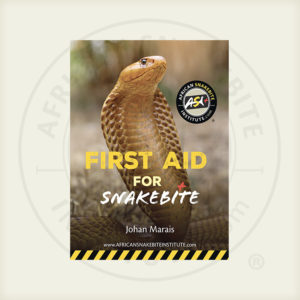 ASI First Aid for Snakebite Booklet
R40.00
ASI First Aid for Snakebite Booklet
R40.00
-
 ASI Lite Combo 3
R1,575.00
ASI Lite Combo 3
R1,575.00
-
 Rangers Book Combo 1
Rangers Book Combo 1
R1,450.00Original price was: R1,450.00.R1,305.00Current price is: R1,305.00.
